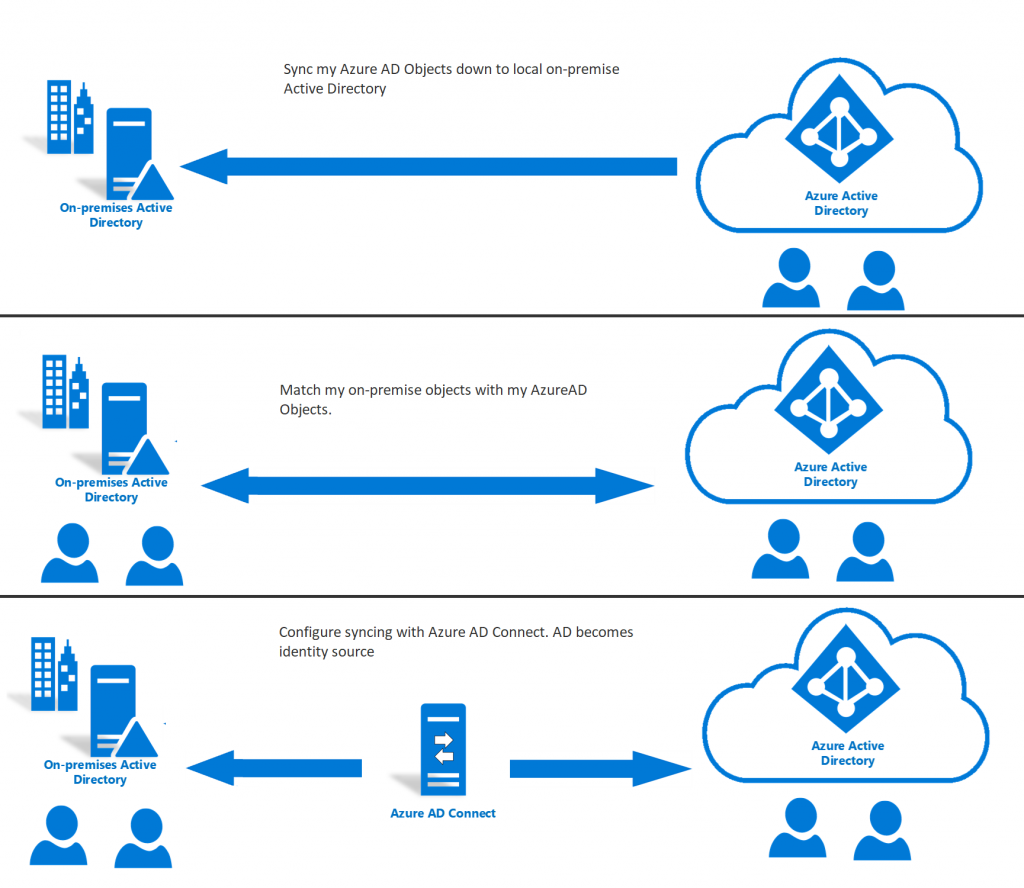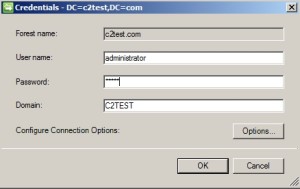
Note: Soft deleted data does have an expiration date and when reached that data is permanently deleted. You can recover this accidentally deleted object (and its data) by either including that organizational unit back into the sync, or, by moving that object into an organizational unit that is still included in the synchronization. The good news is that the data is soft deleted. All data associated with that object, such as a mailbox or OneDrive storage will be deleted. Keep in mind that if you previously synced an object to Azure AD and that object is now contained in an excluded OU that object will be deleted from Azure AD during the next synchronization. Anything under an unchecked OU will be removed from Azure AD. This means that only objects under those checked OUs will be synchronized to Azure AD. In our example, we are going to uncheck everything except ‘ Whoniverse’ and its child OUs.

Once the credentials are entered click Ok. Azure AD Connect just needs an account that can read Active Directory. The credentials you enter here do not necessarily need to be admin credentials. This will launch a screen requesting credentials. This will bring up the Properties screen for that connector.įrom the Properties screen, select Configure Directory Partitions. Under the Connectors section double-click the name of your local Active Directory. This opens the Synchronization Service Manager. Selecting which OUs to synchronizeįirst, log onto the server where you have Azure AD Connect installed and open the Synchronization Service program. If the wizard does not work, you can use these steps as a fallback method. This can be done by double-clicking the Azure AD Connect icon.
#How to sync office 365 groups with ad update#
UPDATE 08/04/18: While these steps do still work, Microsoft recommends changing your OUs by rerunning the Azure AD Connect wizard. We will be working with the latest version of Azure AD Connect and a single forest environment. In our example, we are going to narrow our sync scope to just a few select organizational units in the domain skaro.local.

An example of this may be to exclude an OU that contains service accounts for on-premises applications. Filtering allows us to exclude OUs, and the objects they contain, so they are not synchronized to Office 365. By default, Azure AD Connect is configured to sync all objects in all OUs. In this article, we are going to take a look at changing which objects get synced to Office 365 through organizational unit (OU) filtering.


 0 kommentar(er)
0 kommentar(er)
